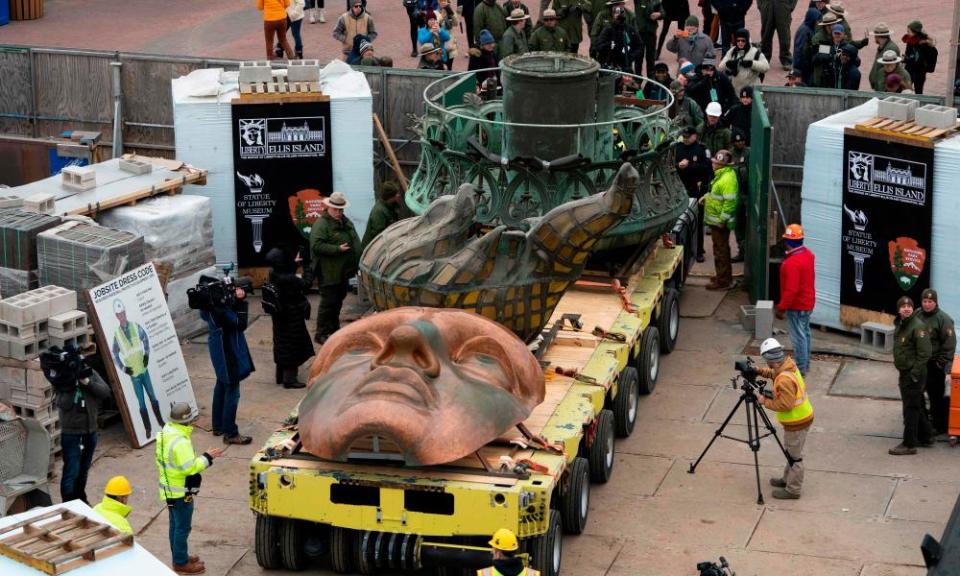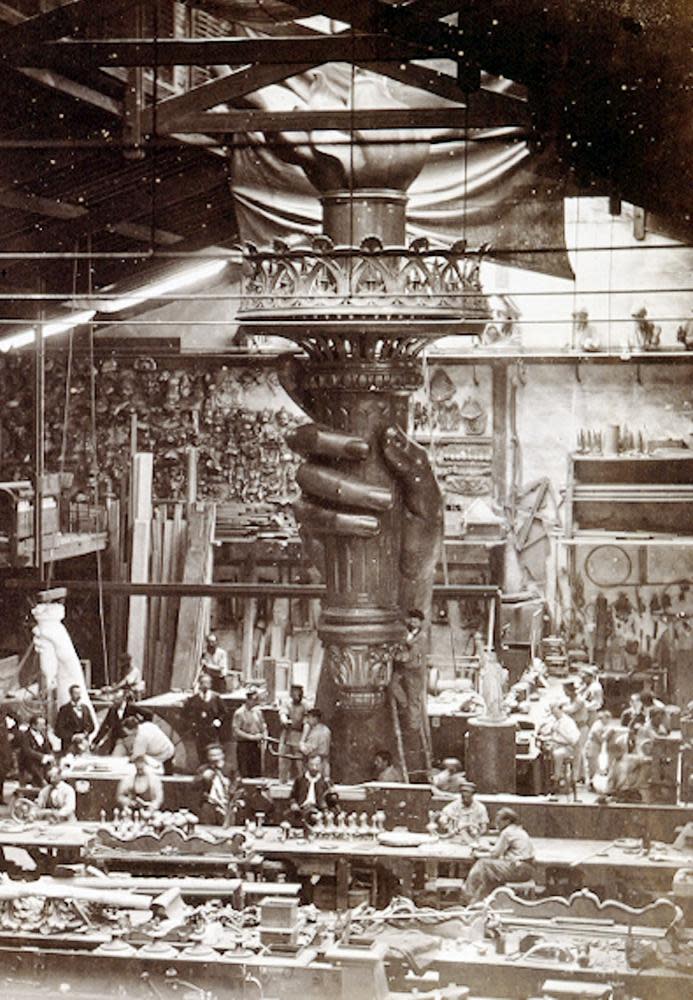Statue of Liberty's original torch gets a new home
Lady Liberty’s light was replaced in 1985 but the original is now to grace a new $100m museum – they just had to get it there

When Larry Sidoti’s grandparents came to America from Italy after weeks at sea in the early 1900s, they were first greeted by the Statue of Liberty.
“The joy that they felt – they were ecstatic and very cautious, because this was a totally new life for them,” Sidoti told the Guardian. “My grandfather had said to me, a number of times, that she stood for freedom, and stood for opportunities.”
More than 100 years later, Sidoti was on Liberty Island as Phelps Construction Group’s general superintendent, supervising the move of the statue’s original torch into its new home – a $100m, 26,000 sq ft museum on Liberty Island, which is set to open in May.
The beginning of the torch’s journey to this venue can be traced back to the 1980s, when the Statue of Liberty underwent a huge restoration to mark its centenary.
Due to decades of exposure to the elements, Lady Liberty’s torch needed to be relocated indoors, experts had decided. New York City’s salty, moist air, an explosive attack on a nearby munitions depot in the first world war and the windows that had been cut into the torch to make it more like a lighthouse had all exacerbated its fragility.
“This was changing the history of this great icon,” said Stephen Briganti, president and CEO of the Statue of Liberty-Ellis Island Foundation, adding that “it seemed to be beyond repair”.
After the torch was lowered on 4 July 1984, it was covered and stored on Liberty Island – only making an outing to appear in the 1985 Rose Bowl parade before going on display in the statue’s pedestal. A replica torch was placed atop the statute in November 1985, according to the foundation.
After September 11, safety protocols capped daily visitors to the pedestal’s interior at 4,500, meaning only a fraction of the island’s visitors – up to 25,000 a day in peak summer months – were able to see the original.
But when the foundation decided to build a new Statue of Liberty Museum on the island, officials were presented with a way to solve the problem.

Moving the 3,600lb artifact safely presented a challenge, however.
Tons upon tons of construction equipment required for the project had to be shipped to Liberty Island via barges that were then moored at temporary docks built for the project.
The ornate, weather-worn metalwork at the base was made of copper “the thickness of a penny,” Sidoti said. “If you were to just touch that copper work on anything, it would bend and be pretty much destroyed.”
“It’s like a huge Tiffany lamp,” he said. “You know the care that you’d take when you’re handling even a small office-type Tiffany lamp? You’ve gotta understand, this Tiffany lamp is 12ft in diameter and 16ft high.”
The torch was first moved into the statue’s pedestal through a trench, but a foyer with doors had since been built, meaning there wasn’t enough clearance to just slide it out along the floor.
“The real challenge was, ‘OK, can this physically fit out?” said Doug Phelps, who heads Phelps Construction Group.
The torch first had to be disassembled into two pieces – the flame and the base.
The team had to reinforce the structure otherwise, “it would just implode on itself”, Sidoti said.
Phelps’s team spent countless hours consulting with historians and restoration contractors before the pieces were ultimately lifted apart with a spider crane set up in the pedestal.
The gap for clearance was just one-and-one-half inches, but “it did fit,” Phelps said.
A trailer – the kind used to transport space shuttles – took the pieces across the island, along with a replica of Lady Liberty’s face, to the museum about 600ft away, where another crane inside the new museum reassembled the torch. The move took place over two days in November and required an on-the-ground crew of 15 people.
“The first thing that went through my head? I’m going to have a really good night’s sleep after two years of worrying about this thing,” reflected Sidoti of the move’s successful completion.
“My son is 42 years old my daughter is 38 years old – they were in awe of the project from the beginning,” said Sidoti, 67. “My grandsons are 10 and 6, and I had them out on the project.”
“I’ve taught my children what the price of liberty is, because I got to learn from my grandfather, and my father who was in the second world war – we passed it down to the next two generations,” said Sidoti, who served in the US navy.
“My parents have passed away, but I know they’re watching, and I’m sure I can feel the smiles on their faces just knowing that I worked on this project.”

